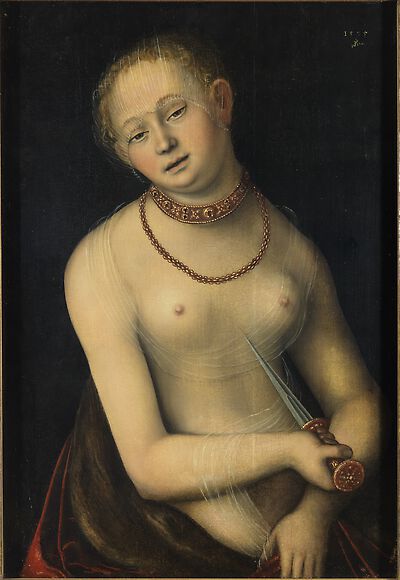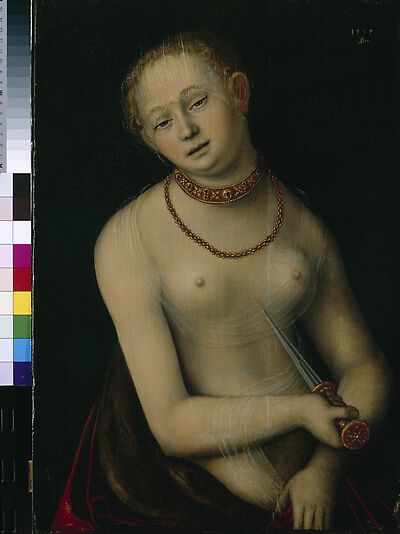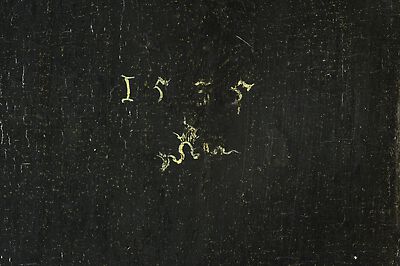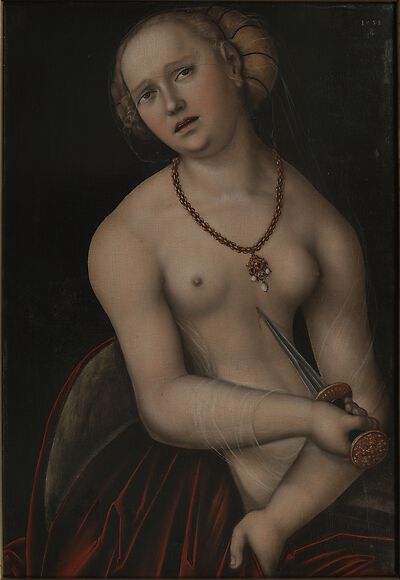The painting depicts the heroine Lucretia as a nude half-length figure. She has an expression of suffering on her face. Her head is inclined to the left edge of the painting and she gazes into the far distance. She holds a long dagger in her right hand with the tip
The painting depicts the heroine Lucretia as a nude half-length figure. She has an expression of suffering on her face. Her head is inclined to the left edge of the painting and she gazes into the far distance. She holds a long dagger in her right hand with the tip pointed towards her breast and in her left hand she holds a fur-trimmed cloak. It is wrapped around her waist and conceals her vulva. Her hair is pinned up and covered with a thin transparent veil. Around her neck she is wearing a band and a chain. The background is dark.
According to the legend Lucretia lived in the 6th century BC and was the beautiful and virtuous wife of the roman Collatinus. The roman King's son - Sextus Tarquinius fell in love with her. During a stay in her house Sextus threatened to kill her and shame her honour if she did not surrender to him. After the rape Lucretia had her father and husband vow vengeance and then she stabbed herself. The event led to an uprising in which the royal family was overthrown and the Roman Empire became a Republic.
Depictions of Lucretia who was seen as the epitomy of female virtue, chastity, fidelity and honour enjoyed great popularity, particularly in the 16th century.
[Literature: Bierende 2002, Follak 2002, Livius 1909]





